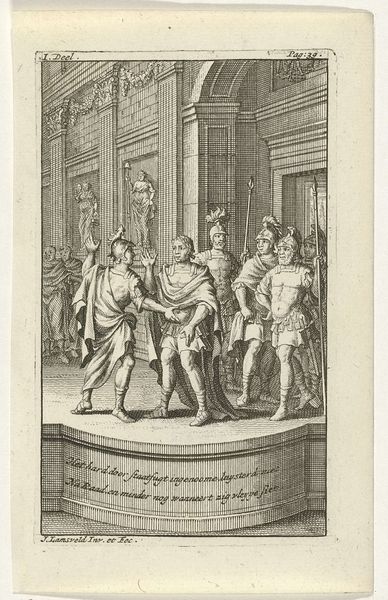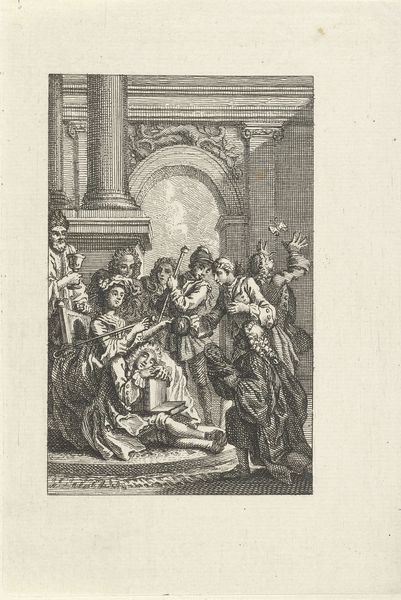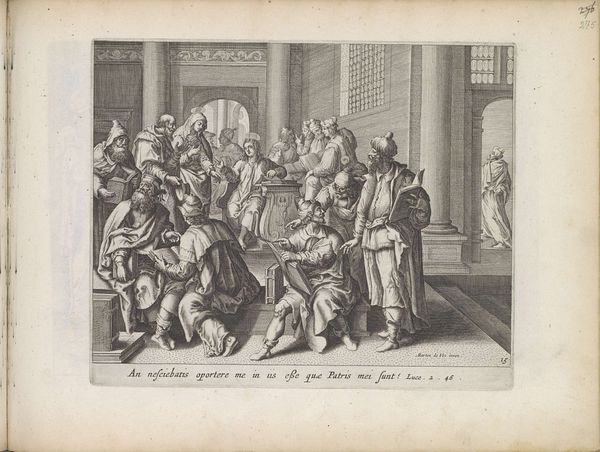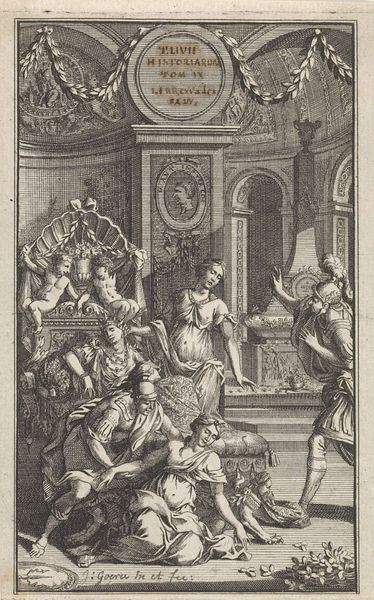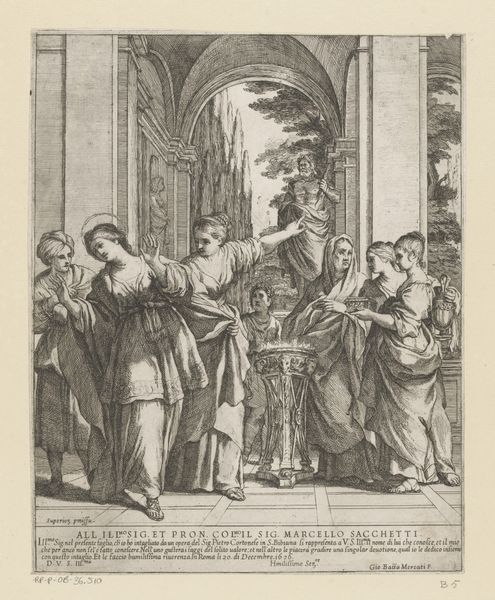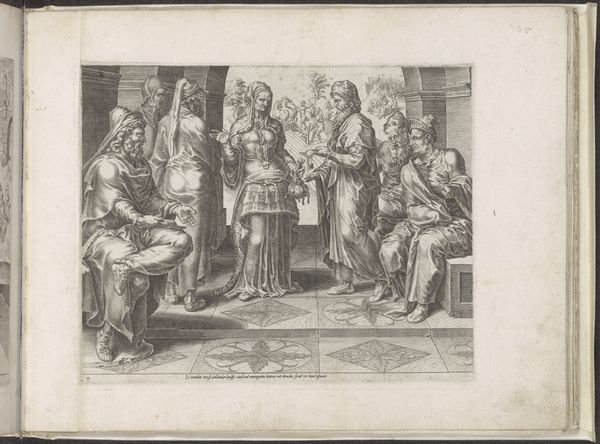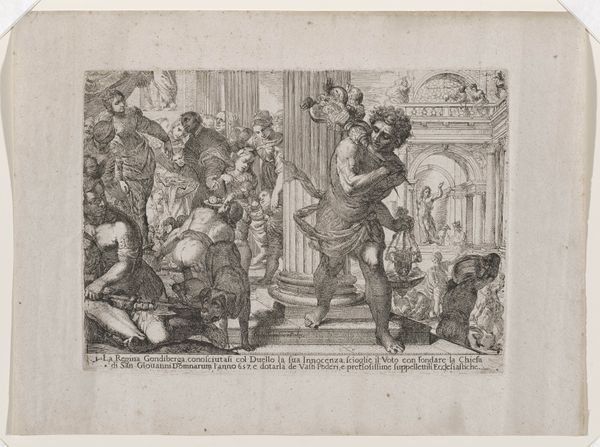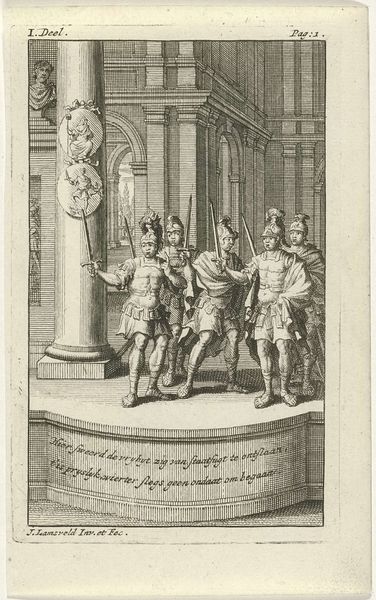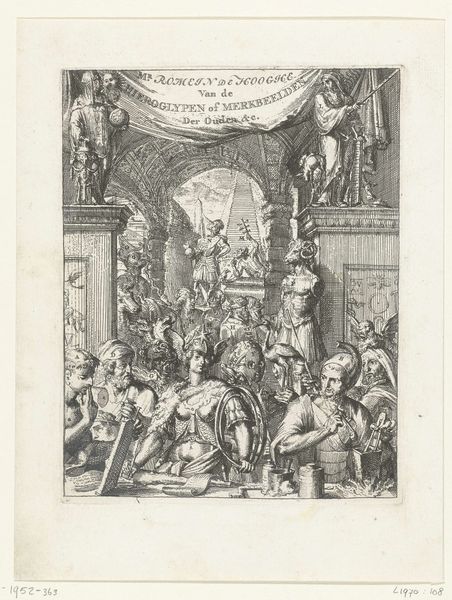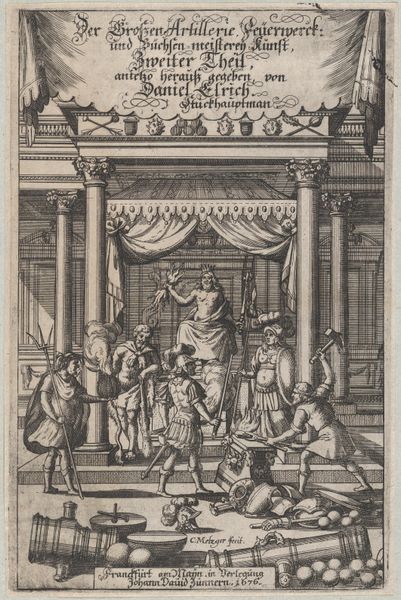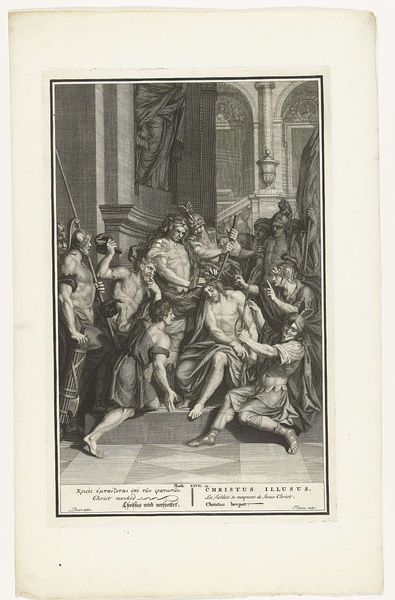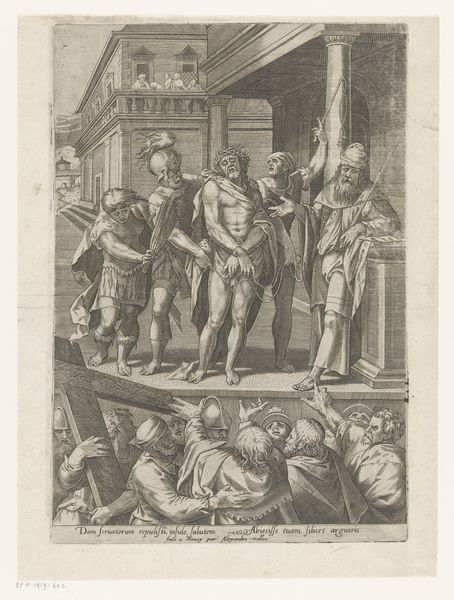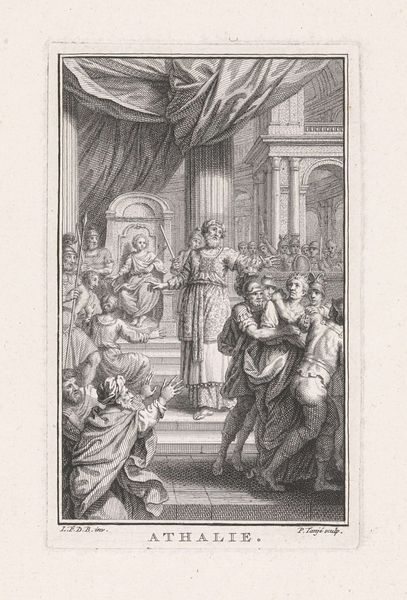
print, etching, engraving
#
narrative-art
#
baroque
# print
#
pen illustration
#
pen sketch
#
etching
#
old engraving style
#
figuration
#
line
#
history-painting
#
engraving
Dimensions: height 130 mm, width 78 mm
Copyright: Rijks Museum: Open Domain
Curator: Here we have Jan Lamsvelt's 1728 engraving, "Moord op Julius Caesar," held at the Rijksmuseum. Editor: What strikes me immediately is the violence captured within such fine lines. It’s all so precise, yet utterly chaotic. You can almost hear Caesar’s last words. Curator: Lamsvelt, a master of historical narrative through print, provides us a scene saturated with the political climate of the Roman Empire. Think of the debates on governance and the fragility of power at the time the engraving was made. The event depicted—the assassination itself—became a potent symbol during periods of political upheaval across Europe. Editor: Absolutely. Look at the senators, surrounding Caesar. There's this overwhelming feeling of betrayal, power turned sour, especially as you think about contemporary implications and power dynamics today, which remain as pertinent as ever. It really serves to explore themes of legitimacy, and the ease with which democracies can be undermined. Curator: Precisely. And see how Lamsvelt utilizes the conventions of Baroque art. The carefully staged drama and intricate details, almost theatrical. Notice also how Caesar's emphasized pose creates a focal point. How do you interpret this compositional choice? Editor: It makes him a spectacle, a martyr even, which complicates any simple reading of the scene as just the consequence of his ambition. What resonates most is this uncomfortable blurring of victim and tyrant. Also consider what wasn’t shown, or that it's portrayed by a white hand while in current times so much is spoken about power related to colored people or race and dominance of others, not the people from Europe themselves. Curator: Those issues would surely add fascinating layers to contemporary readings. I'm curious; does the medium of engraving influence your experience of the artwork? Editor: Absolutely. The crisp, unwavering lines render the whole affair as… inevitable. There’s a coldness, a clinical detachment, which amplifies the horror, for me. But as someone from outside, I want to see a picture of colored leaders getting attacked and brought down because those scenes never arrive on printed art! Curator: I hear your critique and acknowledge the scarcity. Seeing and hearing that can make us consider the perspectives shaped and sometimes excluded through art’s portrayal. This single work, then, becomes a gateway to so much critical consideration. Editor: I think I see art in a different perspective now. This piece encourages thinking, it really offers so much that challenges you to ask questions that go beyond time and brush strokes!
Comments
No comments
Be the first to comment and join the conversation on the ultimate creative platform.
